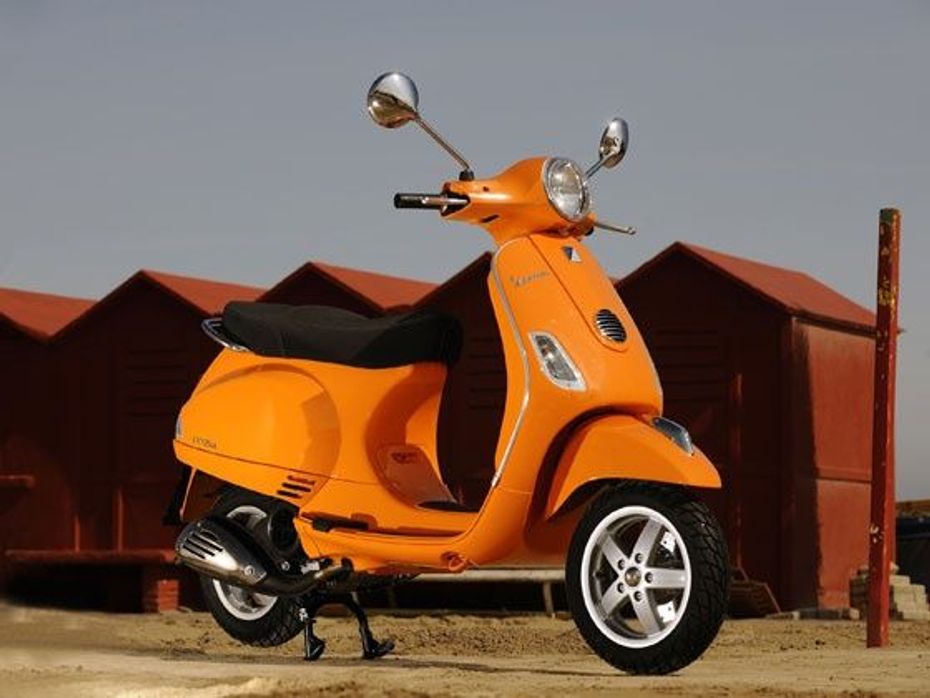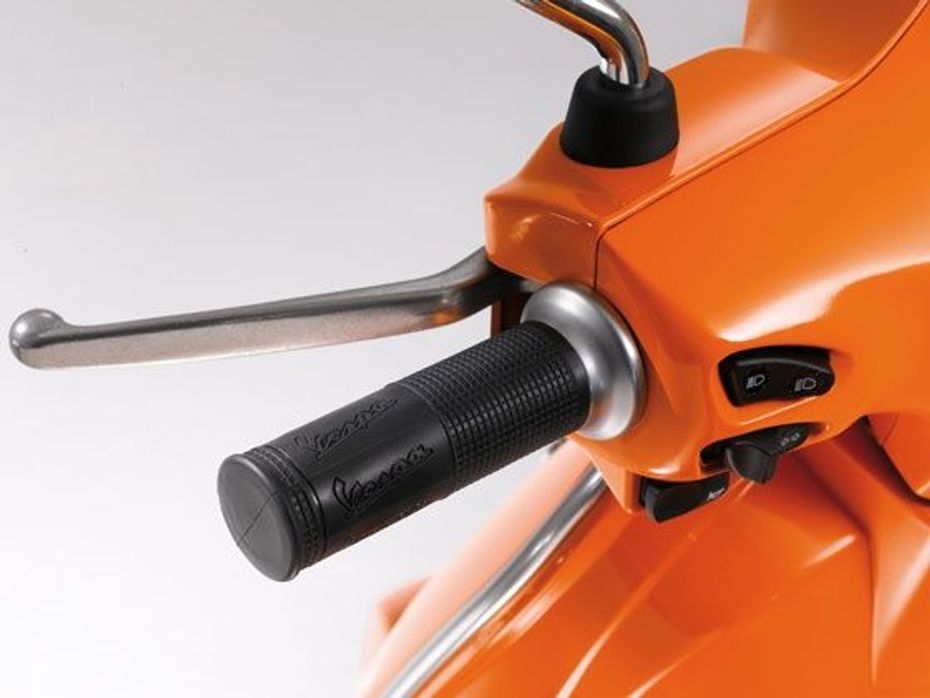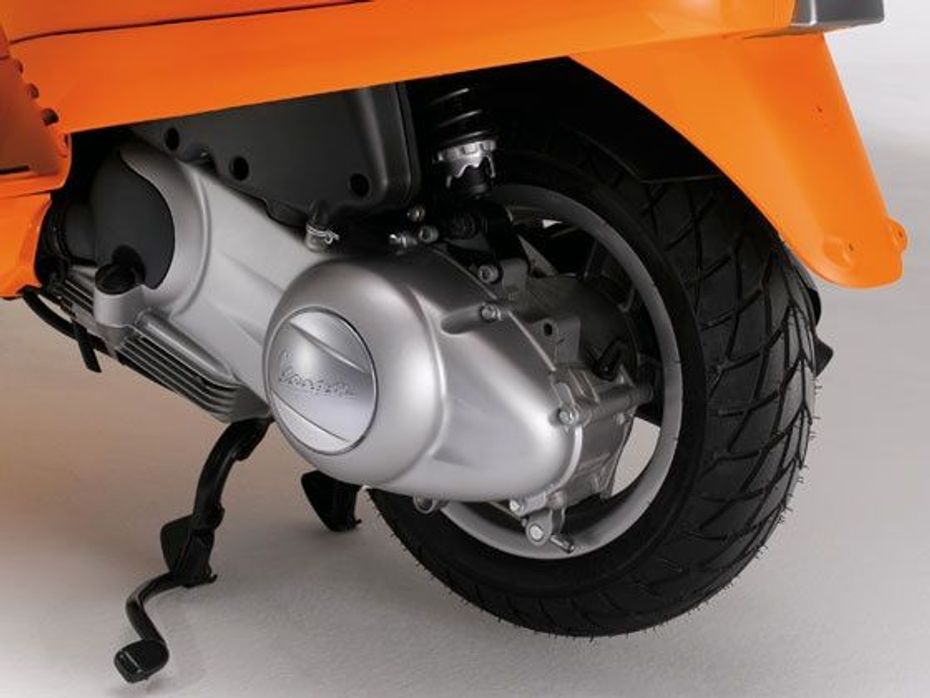
Vespa Elegante Special Edition Launched
- May 11, 2017
- Views : 19637


It was always on the cards for the better part of four years but uncertainty about the way the two-wheeler market in India was shaping up had caused the Roberto Colanino-led management team at Piaggio to delay the relaunch of the iconic Vespa, the first real success story in the Indian automotive sphere. The wait is now over and by 2012 Piaggio will be back in India, on its own steam, and putting the latest incarnation of the Vespa back on our roads.
The exact model will in all probability be from the LX125 model range and this is likely to have that classy waspish shape back on our roads. As many do know this isn't the first or the second time the famous Italian two-wheeler marque is attempting a comeback to India. It first got on to Indian roads courtesy of a technical and commercial JV with Bajaj Auto in 1959-60. In fact, it was the Firodias who did much of the spadework then for this entity as at that point in time they were part of the Bajaj conglomerate and the first fruits of this JV was an early version of the Piaggio Ape three-wheeler with the 150cc three-speed scooter following in its wake.
Given the socialist thought process prevalent then, the cute and cuddly Vespa built at the Bajaj works at Akurdi near Pune was a trend setter for its time even though it had its hands full trying to stem off the sizeable competition from yet another Italian rival - the Lambretta made by API in Mumbai. The Bajaj-Piaggio technical collaboration was to run out in 1969 but was extended annually till 1971 whereupon the government refused to extend it. In its garb of self-sufficiency, it precluded any worthwhile joint ventures in industry and Piaggio had to bow out of the country. Bajaj Auto though went from strength to strength, working out large capacities, getting in the latest models - the Super, the Chetak, the Cub being just three such and storming to the top of the scooter volume heap globally.

When the first phase of economic and industrial liberalization was resorted to in the early 1980s, Piaggio saw an opportunity and even though it did talk with Bajaj Auto, by that time its former Indian partner had acquired critical mass way beyond the Italian firm's wildest imagination. It tried to find suitors to get back to business on Indian terrain and it found not one but two of them. The first was the state owned Hyderabad Allwyn which started producing the slim line Vespa Primavera model with a 100cc engine while the bigger story was the JV with Lohia Machines which saw the launch of the Vespa XE, first with a 125cc mill and then with a proper 150cc offering.
The second coming wasn't much of a rosy advent for the Italian scooter maker. The slimline Primavera, highly capable though it was, didn't click with Indian scootering fanatics who equated lack of bulk to lack of strength. Also given the mismanagement of Hyderabad Allwyn, this JV was doomed to failure any which way one cared to look at it. The LML Vespa JV though held immense promise and in the early years it definitely took the fight not just to Bajaj Auto but also to everyone in the Indian two-wheeler world with its refinement, build and performance. Of course production and management control weren't of a highly efficient order and the JV went through a host of revisions, especially on the financial front.
The Indian two-wheeler market was suddenly seeing the virtue of the motorcycle and in such a scenario even the best side-engined scooters in the world had their work cut-out. The LML-Piaggio JV ended in acrimony late in 1998-99 and so it seemed that the famous Vespa brand was lost for good. This was further underlined at that point in time with the bottom falling off the scooter segment and almost taking the hitherto unchallenged Bajaj Chetak and its maker down under!

Piaggio was busy though doing a flanking act of its own and so what if it hadn't tasted success with its scooters, it could always try and give its three-wheelers a go. In this area of last-mile public transportation it saw a gap and hammered home its advantage thanks to a JV with the Greaves engineering group which later became a wholly-owned Piaggio subsidiary. Piaggio Vehicles India Pvt. Ltd. Set up to make three-wheelers kicked off operations in 2003 with just under 35,000 units that year and in the span of just six years it was making 182,000 units per annum by 2009. Ably spearheaded by the affable Ravi Chopra, Piaggio Vehicles was among one of the first to show off a four-wheeled sub-one-tonne pick-up, even before Tata Motors had pulled its veritable Ace out of the LCV brat pack. However, it didn't have the boldness of purpose, given its financial strength and dealer penetration to launch this first. The Ape Truk though came within a year and a half after the launch of the Tata Ace and is doing as best as can be expected, given that its greatest rival is not the Tata product but the very three-wheeler which is made alongside it at Baramati!
Piaggio Vehicles has also set up a wholly new modern engine plant to make a range of engines, both for two- and three-wheelers, in petrol and diesel engined forms. Right now though only the diesel engines are being produced, but the manufacturing lines for 125cc and larger units are already firmly in place. This should help the next range of Vespas for India which Piaggio hopes to make at the rate of about 150,000 units a year within a couple of years of establishing its all-new plant for scooters.

The ironic thing is that Piaggio already had the tooling and the production engineering ready for the Nuova Vespa to be made in India in 1997-98 with LML but that just didn't get off the ground. It was an expensive failure but now given the fact that manual-transmission scooters are all but wiped off the face of this earth (even Honda which cocked a snook at Bajaj with its brilliant side-engined 4-speed Eterno has had to stop producing it), Piaggio has a modern machine with the now de-rigeur central engined layout and a variomatic final drive to do the business. However, what it will yet have, in abundance, will obviously be the style and the turnout reminiscent of the earlier Corradino D'Ascanio masterpiece, brought bang up to date in the 21st century. I am sure this new age Wasp would be a cute lil' stinger!

Vespa Elegante Special Edition Launched

2016 EICMA Motorcycle Show: Vespa Electtrica electric scooter...

Vespa 946 Not Coming To India On October 25!

Vespa GTS 300 scooter India launch in late 2016

Vespa 946 & GTS 300 India launch by mid-2016

Vespa VXL and Vespa SXL launch on September 1st

Football legend Alessandro Del Piero is the new brand ambassador for...

Vespa gets style makeover with 946 Emporio Armani

Piaggio launches online store on Snapdeal
India's largest automotive community